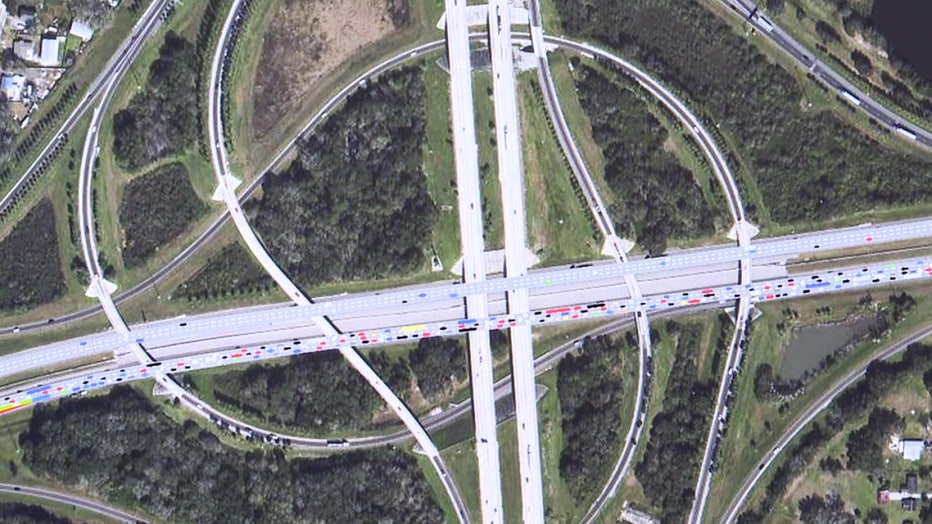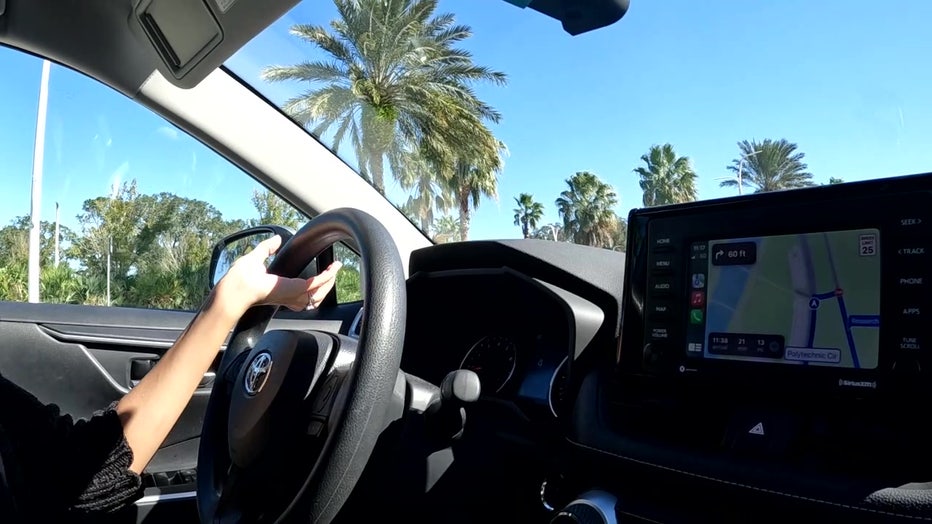I-4 traffic may become safer, smoother with technology being researched at Florida Polytechnic University

Traffic simulator designed to improve I-4 commute
FOX 13's Carla Bayron reports on the partnership between Florida Polytechnic University and FDOT to implement safe driving roadside technologies to alert drivers to upcoming traffic and hazards.
LAKELAND, Fla. - Florida Polytechnic University and FDOT are working together to make the notoriously dangerous I-4 corridor between Tampa and Orlando safer for drivers.
The Florida Department of Transportation (FDOT) is currently installing roadside units along I-4 that can communicate with a vehicle's software to alert drivers about upcoming traffic, crashes, slowdowns, and closures ahead.
"After processing this data, the vehicle will know exactly: where should I go, should I reduce my speed, or should I apply the brakes or accelerate-- all of these will be communicated," explained Dr. Rawa Adla, an assistant professor of electrical & computer engineering at Florida Polytechnic University.
READ: Deadly school bus crash claims life of Sun City Center motorcyclist on U.S. 301
Dr. Adla and her research team of students analyzed which areas along I-4 spanning from Orlando to Tampa/Clearwater and arterial roads around it were affected the most by traffic congestion and crashes. It turned out to be the intersection of I-4 and I-75.

The research team determined that where I-4 meets I-75 is the most congested area of I-4 and the area that's most impacted by crashes.
She then replicated real-life scenarios happening on I-4 everyday over 24 hours in a simulation model to study the technology's benefits.
"Once we have the implementation of all roadside units on I-4, our analysis shows we might have a great reduction in number of crashes, improvement of the traffic delays we have currently, and a reduction of the number of congestions," Adla said. "I'm not promising we will get it completely, but it will be a great reduction."
On arterial roads, the technology can make it easier for traffic lights to assist emergency vehicles to cross intersections more safely.
Now in phase two of the research, Dr. Adla is collecting and analyzing real-life data from the roadside units to see how the technology can improve.

The researchers are collecting and analyzing real-life data from the roadside units to see how the technology can improve.
She believes this technology is the future of transportation -- for all main roads.
"We're expecting by 2027, we should have at least 20% of the cars on the road equipped," she said.
The expectation is that autonomous vehicles, which Dr. Adla believes will be on the road in less than ten years, will be able to utilize this technology.
The project, which is called the I-4 Florida’s Regional Advanced Mobility Elements (FRAME) Project, is funded by FDOT and the U.S. Department of Transportation.
STAY CONNECTED WITH FOX 13 TAMPA:
- Download the FOX Local app for your smart TV
- Download the FOX 13 News app for breaking news alerts, latest headlines
- Download the SkyTower Radar app
- Sign up for FOX 13’s daily newsletter

